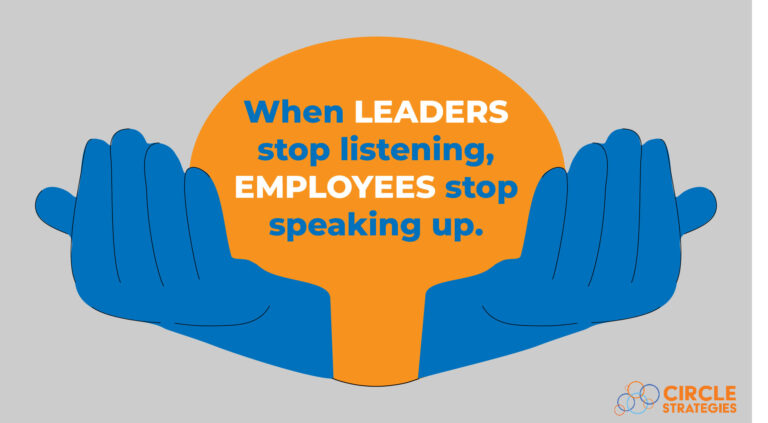Effective leadership starts with one essential skill: listening. When leaders truly hear their employees, they create an environment where trust flourishes and collaboration thrives. On the flip side, when leaders stop listening, employees stop speaking up, leaving innovation, motivation, and creativity untapped. The impact is clear—listening is not just a nice-to-have; it is the foundation for a strong, engaged team and a thriving organization.

The Impact of Listening on Employee Engagement:
Employee engagement is alarmingly low. Gallup reports that only 36% of employees are engaged in their work, while 13% are actively disengaged. This disengagement costs U.S. companies between $450 billion to $550 billion annually in lost productivity (Achievers).
A significant factor contributing to disengagement is employees feeling unheard. When leaders fail to listen, it leads to the following outcomes:
The Benefits of Active
Listening:
Active listening involves fully concentrating, understanding, responding, and then remembering what is being said. Leaders who practice active listening can expect the following benefits:
Tips and Techniques for Leaders:
To cultivate a culture of active listening, leaders can implement the following strategies:
-
Be Fully Present:
-
Technique: Eliminate distractions during conversations. Put away electronic devices and maintain eye contact to show attentiveness.
-
Value: Being fully present demonstrates respect and ensures clear understanding, building stronger connections between leaders and employees.
-
-
Encourage Open Dialogue:
-
Technique: Ask open-ended questions such as, “What are your thoughts on this?” or “How can we improve in this area?”
-
Value: Open dialogue fosters a culture of collaboration, where employees feel encouraged to share ideas and perspectives.
-
-
Provide Constructive Feedback:
-
Technique: Offer timely and specific feedback, focusing on behaviors and outcomes rather than personal attributes.
-
Value: Constructive feedback helps employees grow and align with organizational goals, reinforcing positive behaviors.
-
-
Implement Employee Suggestions:
-
Technique: Act on feasible employee ideas and acknowledge their contributions publicly.
-
Value: Recognizing and implementing employee suggestions boosts morale, showing that leadership values their input.
-
-
Establish Regular Check-Ins:
-
Technique: Schedule consistent one-on-one meetings to discuss progress, concerns, and ideas.
-
Value: Regular check-ins create opportunities to address issues proactively and build stronger leader-employee relationships.
-
Conclusion:
Active listening is more than a communication skill; it’s a leadership imperative that drives employee engagement, productivity, and organizational success. By prioritizing listening, leaders can create a workplace where employees feel heard, valued, and motivated to contribute their best. Schedule a free consultation if you want to learn more
